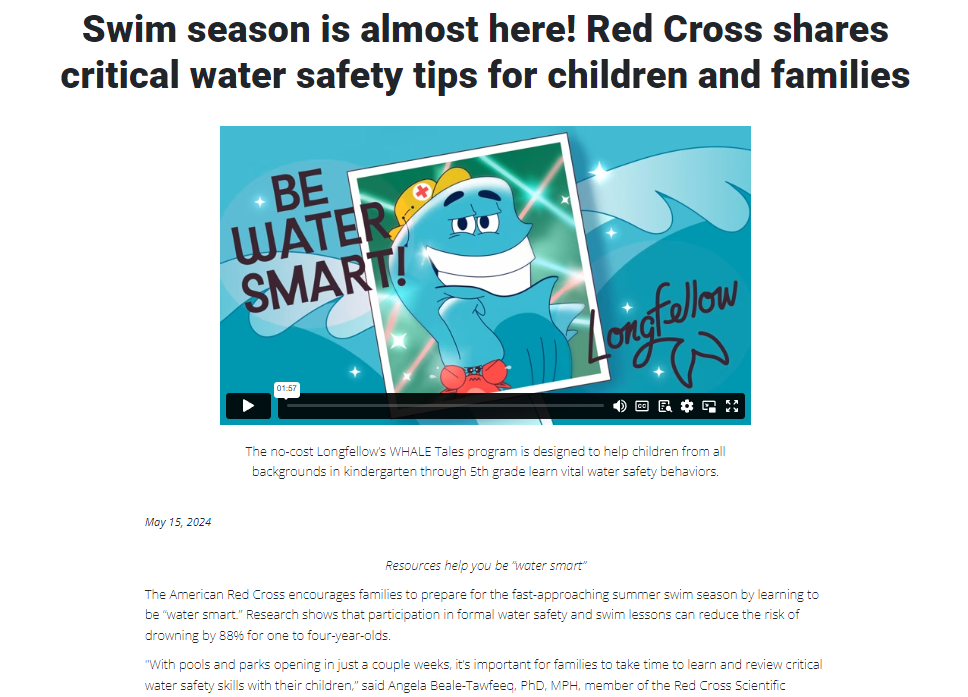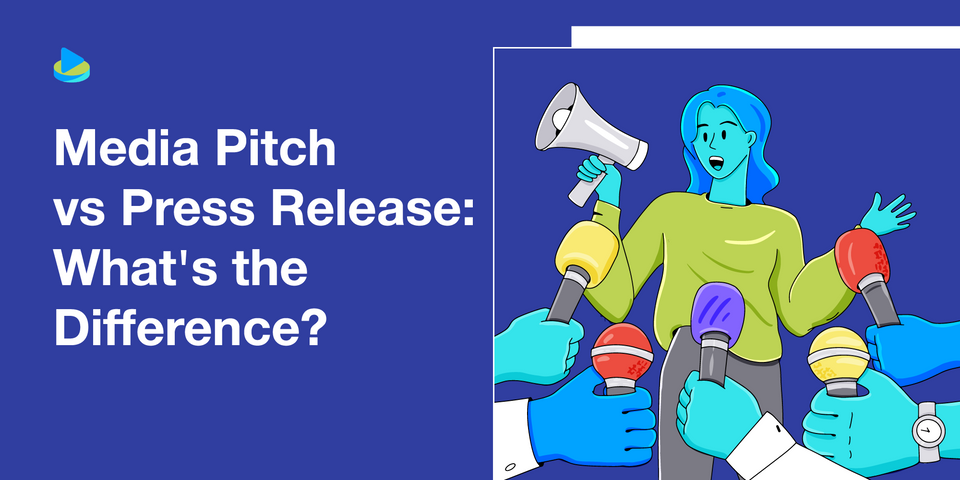What’s the secret to getting your news noticed?
Whether you’ve launched a new initiative, established a foundation, or introduced a fantastic new product, sharing your company’s news effectively is crucial. Nonprofits, too, often need to respond to recent world events with timely comments.
But here’s the big question: should you go with a press release or a media pitch?
What exactly are they, and how do you choose the right one? And should you be content with traditional media outlets or look for an even wider audience?
Let's unravel the mystery and sort out the difference between a media pitch and a press release once and for all so you always know what to send and where to send it.
Table of Contents
What is a media pitch?
A traditional media pitch definition goes something like this:
A media pitch is a personalized email reaching out to a particular journalist letting them know about an interesting and newsworthy occurrence in your company.
(Of course, you can send emails to more than one journalist, but make sure that each one is personalized to them.)
Media pitches are less formal and more conversational than a formal press release. Each is a concise email, personally addressed to the journalist and tailored to their interests and audience.
Remember that today 'media' encompasses more than the traditional print, radio and TV media, so PR professionals need to think outside the box when planning personalized outreach emails. So many people consume podcasts and videos that it's worthwhile pitching podcast hosts—and YouTubers too—if their shows broadcast to your target audience.
Purpose
Why might you send a unique media pitch to each journalist rather than relying on your blanket press release?
The idea is to let the right journalist (or journalists) know about an innovation or story idea that their audience would find interesting or useful.
That could be a new product launch or update, a new CEO, exciting changes ahead, a new venture or environmental gain, an event or charity you're supporting—anything newsworthy that their readers, listeners or viewers would find interesting.
Content
What information does a good media pitch contain?
Media pitches are a less formal piece than a press release. They're brief emails, which tease the story rather than giving all the details.

Start with a compelling subject line and make sure you greet the journalist/podcast host etc. by name and mention the reason you chose them for your personalized outreach.
Briefly update them with important information about the news you're promoting and say why it deserves coverage. If you can, suggest a story angle or two and mention the intended audience.
Conclude with a call to action and your contact details. CTA offers might include:
- Setting up an interview with, for example the CEO or lead developer
- Offering a free product demo or trial
- Inviting them to attend your event
- Offering an exclusive first-peek
- A follow up offer, e.g., "Can I follow up with more details?" or "Would you like me to schedule a follow up call to discuss this further?"
Recipient
Send media pitches to a specific journalist, columnist, TV, radio or podcast host, YouTuber, blogger—in fact, any media personality with the company's target audience.
For example:
Imagine you're an AI focused start up that develops cutting-edge machine learning algorithms and advanced data analytics solutions tailored for the marketing industry.
You're just about to release your next-level analytics tool and want to generate some excitement around the launch. So, you research podcasts, journalists and YouTube channels that focus on marketing strategies, tools, and industry trends.
But you might also widen your pitch to include people who cover business innovation, startups, and industry shifts. Don't forget people in the latest advancements in technology, AI, and machine learning fields and writers who specialize in data science, analytics, and their applications in business.
You won't send your pitch out indiscriminately. Instead, choose the right journalists, podcasters etc. in each field. Here's a pitch example for a fictional company's marketing product to an imaginary podcast.
Media pitch example
Subject: Exclusive: New AI Tool Revolutionizing Marketing Analytics
Hi Chris
I hope you’re well. I’ve been following your recent series on "Marketing Mavericks: Strategies That Disrupt" and thought you might be interested in a new development from MarktBiz Reimagined. We’re about to launch an innovative AI tool that promises to transform how businesses analyze their marketing efforts.
Unlike existing solutions, our tool has Real-Time Predictive Analytics, Automated Customer Segmentation and Natural Language Processing (NLP) for Sentiment Analysis all of which offer our users enhanced campaign effectiveness and improved customer personalization.
Would you be interested in an exclusive interview with our CEO, Kelly Smith, to discuss how this tool is set to revolutionize the industry?
We’d be happy to provide you with early access to the tool and any additional information you need. Additionally, we’re hosting a virtual press briefing next week. Can I send you an invitation?
Looking forward to your thoughts.
Best regards,
Frith Brown, Marketing Officer
[Contact Information]
What is a press release?
Press releases are official statements released to media outlets by your company's PR professionals. A press release aims to get as much media coverage as possible to share important announcements or information with the public.
A press release isn't sent to one specific journalist or even one branch of the media. Rather, it's a formal announcement sent out by wire service and available to all. Businesses may also share the information by publishing the press release on their own website.
Purpose
Press releases must be newsworthy; i.e., they must include important news about the company. They may also include information that sparks a good story idea or an original angle. When journalists are inundated with trivial, uninspiring press releases from a company there's a danger they'll ignore them completely or at least relegate them to the bottom of the pile.

Newsworthy press release topics could be:
- New product launch or updates
- Company milestones (e.g., anniversaries, revenue achievements)
- Mergers, acquisitions, or partnerships
- Executive appointments or changes
- Major events (e.g., conferences, grand openings)
- Awards or recognitions
- Crisis management or addressing public concerns
- Research findings or industry reports
Content
A press release is a much more formal piece than a media pitch and generally follows this pattern.
Headline, subheadline, dateline: designed to catch attention and anchor the press release in time. Not all press releases need a subheading; if you use a detailed headline, a subheading would be too much.
Social media, sport, and entertainment stars band together to call for climate justice in this year’s World Vision 40 Hour Challenge
Lead sentence: Important information—often written in a way that makes the reader want to continue reading.
A rugby star, prominent TikTok content creators, singer, actor, teacher and climate activist are just some of the well-known New Zealanders putting their names behind this year’s World Vision 40 Hour Challenge
Body expanding on the news—typically this is written using the inverted pyramid style of news writing, i.e., the most important information including who, what, when, where and why, followed by supporting details.
Athlete Caleb Clarke, content creators Win Wolf, Judah Metu-Teaukura and Liv Martin, actor Kimberley Crossman, singer/songwriter Paige Tapara, and climate advocate Brianna Fruean are inspiring rangatahi [teenagers] to take on challenges to raise funds for this year’s focus – the climate crisis.
The climate crisis is one of the biggest issues facing humanity...
Quotes from spokespeople. Include quotes, images and links to videos that journalists can include in their stories. Not only does this make the reporters' job easier, it may also spark new angles to create a more original story idea.
Win says he found hope in the work World Vision is doing to help regreen communities in Timor-Leste.
“The regreening technique is so simple and involves tapping into existing root networks to regrow trees. It’s much faster and more effective than planting new trees!"
Concise conclusion. In our example, the conclusion includes the call to action needed to spur people to join the challenge.
New Zealand youth are invited to sign up and choose their challenge now at 40hour.org.nz
A company/client boilerplate and contact information.
A boilerplate sums up your company or client in one paragraph. Don't make reporters jump through hoops to find out more. Make it easy to get more information by including your best and easiest direct contact details.
All examples from this 2024 World Vision NZ press release.
Recipient
Press releases are meant to be widely circulated to all media. They're usually sent by press release distribution services. However, you can ensure that specific journalists get the release by emailing them directly and including a link to your press release.
Many companies share information on their websites or use online public relations platforms like PRWeb or online platforms like Medium to distribute the information even further.
Press release example

Media pitch best practice
Tip 1
Do your research before you write the email. Understand the journalist's work, their beat and interests so you can tailor the pitch to align with their focus.
Don't send out mass emails as media pitches. Journalists can spot them a mile away and it's impossible to personalize them properly.
Tip 2
Do offer the value immediately. Explain why your story is relevant and interesting to the journalist’s audience.
Don't be vague. You'll need enough detail to show why the story is compelling while still keeping the email brief and to the point.
Tip 3
Does the journalist, or their organization, have specific guidelines for pitches? If you ignore clearly stated guidelines your pitch could be ignored or automatically classed as spam.
Press release best practiceTip 1
Do stick to a simple, clean format. Make it easy to read and digest and avoid using complex jargon that many people wouldn't understand.
Don't be tempted to send out multiple announcements in one press release. Stick to one topic per release.
Tip 2
Do provide high-quality images, videos, or links to multimedia the media can use to enhance the story
Don't Overhype: Stick to the facts without exaggerating; credibility is key.
Tip 3
Proofread: Whether it's a press release or a media pitch ensure your information is accurate, there are no spelling or grammatical errors and all the links go to the right places.
Final words
Got a media list of journalists you'd love to see cover your news? Or know of a podcast host whose followers would be super interested? Right now, podcasts are a thriving medium and a fantastic way to share your story.
Why not send the host a media pitch and suggest an interview or an angle for a topical episode?
Where there's one suitable podcast, there are probably more, and you'll find them all on Rephonic.
Rephonic's podcast database lists all the information you need to discover great podcasts to help you get the news out.
Get their contact details when you try Rephonic today.


